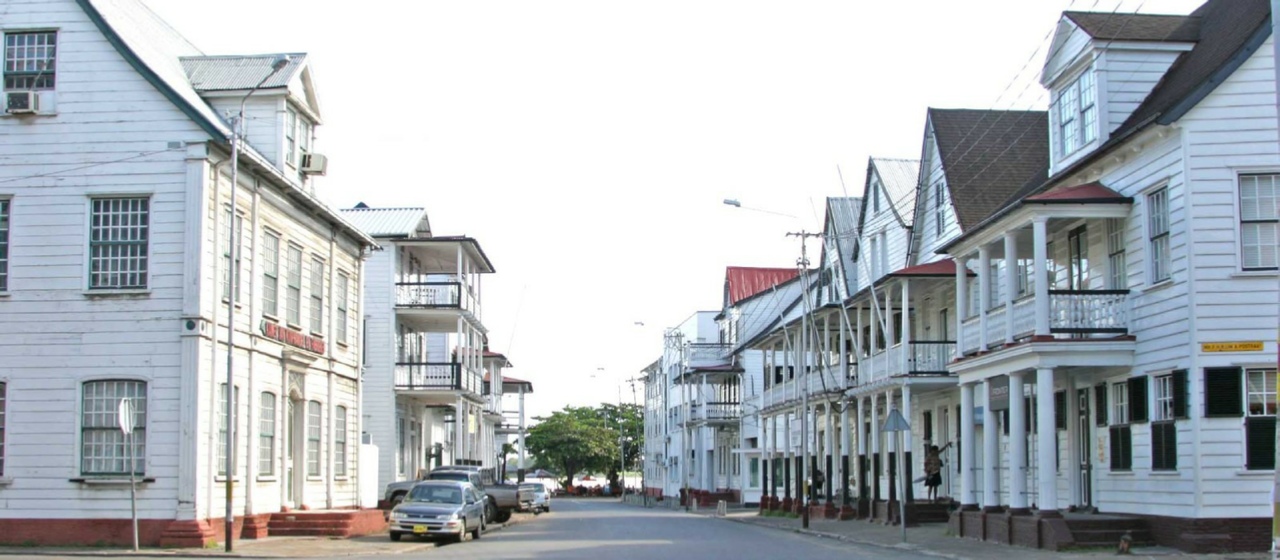Suriname
General information
The rainforest of Suriname covers about 80% of Suriname's land surface. The capital of Suriname is Paramaribo and has 290.000 inhabitants. Dutch is the official language of Suriname, but the locals speak many more languages. Everybody speaks Dutch, but every community speaks her own language, e.g. Javanese or Chinese.
Suriname has a tropical climate, which means the weather is warm and moist. The average year temperature is 27 C. The only variation in the climate is the wet and dry seasons. In January there is a short wet season, which can possibly last till February. The longest wet season is from April up to and including August. But the sun shows itself daily. Even in the wet seasons, the sun shines a few hours a day. Because Suriname is close to the equator, there's only a short twilight. The sun sets between 6 and 6.30 p.m.
Suriname's coast is flat, there are stretched out mud banks and here and there are shell or sand beaches. The area is very marshy with "swamp forests", with low lying forests, which is common around marshy areas. South of the flat coast lies, from east to west, a savannah area, which includes white, sandy areas. Further inland you'll find 80 percent of Suriname exists of untouched tropical rainforest
Routine vaccinations
Before travel, be sure you and your children are up to date on all routine immunizations and vaccinations.
See your doctor at least 4-6 weeks before your trip to allow time for shots to take effect. If it is less than 4 weeks before you leave, you should still see your doctor. It might not be too late to get your shots or medications as well as other information about how to protect yourself from illness and injury while traveling.
Malaria: Prophylaxis with Lariam, Malarone, or doxycycline is recommended for all areas, with the exception of Paramaribo and the coastal districts of Nickerie, Coronie, Saramacca, Wanica, Commewijne, and Marowijne north of latitude 5 degrees N.
Vaccinations:
Hepatitis A Recommended for all travellers
Typhoid For travellers who may eat or drink outside major restaurants and hotels
Yellow fever Recommended for all travellers
Hepatitis B For travellers who may have intimate contact with local residents, especially if visiting for more than 6 months
Rabies For travellers who may have direct contact with animals and may not have access to medical care
Measles, mumps, rubella (MMR) Two doses recommended for all travellers born after 1956, if not previously given
Tetanus-diphtheria Revaccination recommended every 10 years
Districs
Suriname is divided in 10 districts. The most important one is Paramaribo. 5 districts are located along the coast from east to west. The names of these 5 districts are: Marowijne, Commewijne, Saramacca, Coronie and Nickerie. These are connected by road which goes from Albino in the east to Nickerie in the west. South of Paramaribo are the remaining 4, which are: Wanica, Para, Brokopondo and Sipaliwini. Suriname's landscape can be divided in 3 parts. From the south to the north: First, there is the inland part, which is covered with tropical rainforest. Second, there is the savannah area which lies north of the rainforest and consists of white sand areas and savannah forest. Third, there is the coastline which is quite flat.
Population and religion
Suriname exists of a multicultural society. This is because of the slavery and immigration of labourers. The largest communities are the Creoles, Hindu's and the Javanese. Besides them there's also the Indians, Maroons, Jews, Chinese and descendants of Dutch farmers called the Boeroes. The communities differ in religion, political opinion and economical point of view. The Creoles mainly had administrative jobs and the Hindu's and Javanese mainly worked in the agriculture.
History
Suriname's original inhabitants were the Indians. The oldest place as proof of their existence goes back to 2000 year B.C. They lived as nomads and spent their day hunting and collecting. Over the years they started living as agriculturalists. They would settle on a certain place for a while and then move on to another place. Suriname's discovery was around the year 1500. In the year 1449 the Spaniard Alonso de Ojeda discovered the Guyana's. Spain wasn't immediately interested in the Guyana's because they didn't see any economical potential in them. Only when the rumour spread that El Dorado had huge amounts of gold, they started being interested in the area. Around the year 1550 Europeans started visiting the Guyana's regularly, looking for gold and to trade with the Indians. In 1651 Suriname was colonised by the British, but because of a war between Britain and the Netherlands in 1651, it was handed over to the Netherlands.
Slavery and immigrants
In the beginning of the 17th century the transport of slaves to Suriname started. This was because plantation holders needed more labourers. The West Indian Company played a big part in the slavery. In 1863 slavery was abolished by the Dutch government, this was decided after Britain abolished slavery in 1808. The plantation holders still needed the more labourers need, therefore the Netherlands decided to import labourers from the Dutch East Indies.
.
-


















































































































































































































































































































































